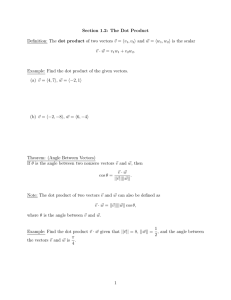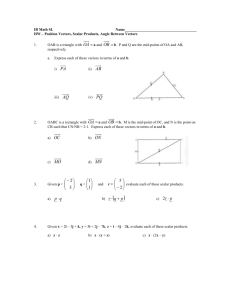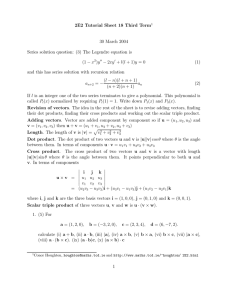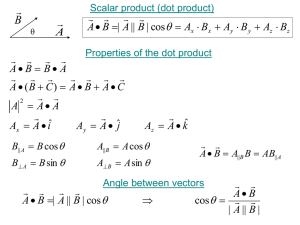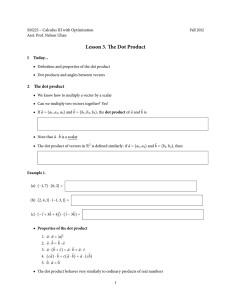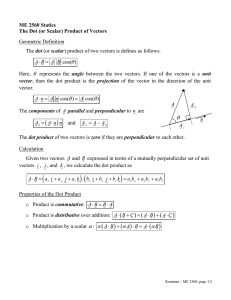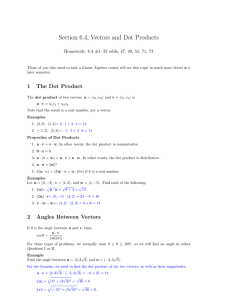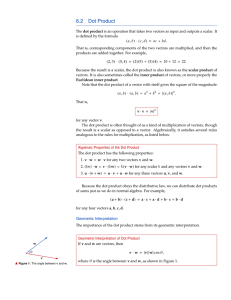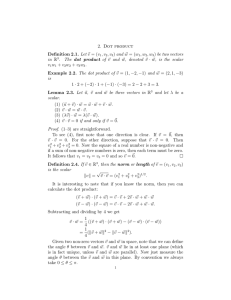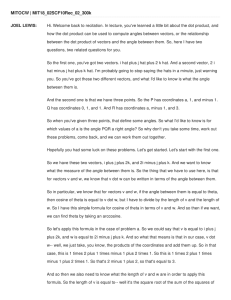Lecture 2, September 26 • , a , b
advertisement
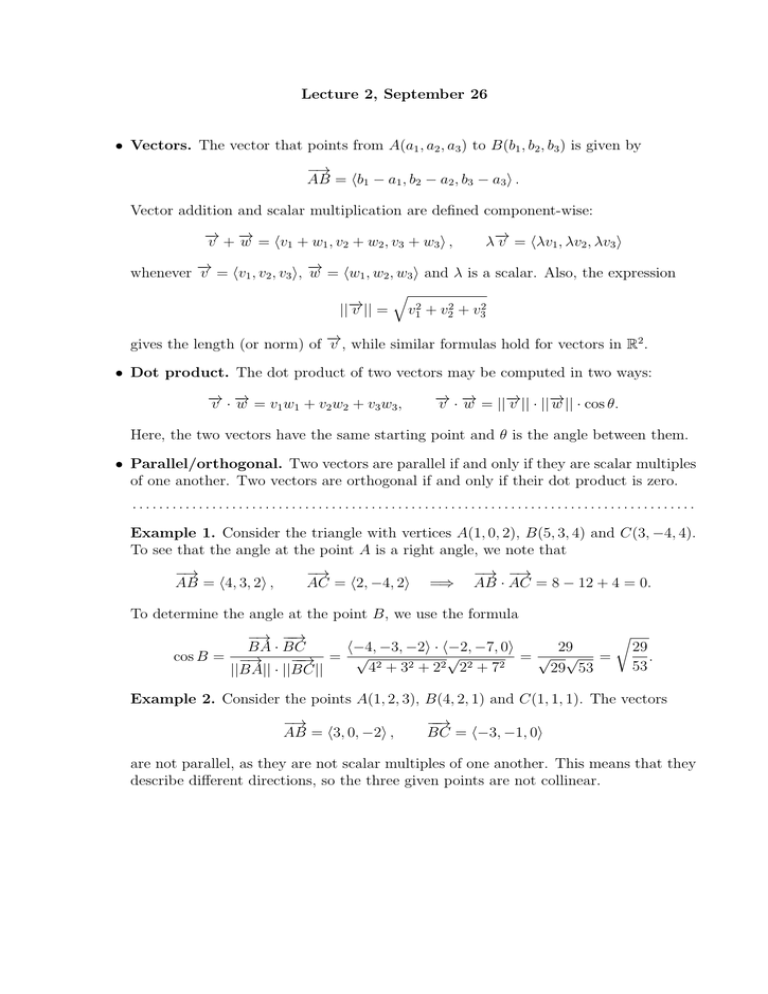
Lecture 2, September 26 • Vectors. The vector that points from A(a1 , a2 , a3 ) to B(b1 , b2 , b3 ) is given by −→ AB = ⟨b1 − a1 , b2 − a2 , b3 − a3 ⟩ . Vector addition and scalar multiplication are defined component-wise: − → → v +− w = ⟨v1 + w1 , v2 + w2 , v3 + w3 ⟩ , → λ− v = ⟨λv1 , λv2 , λv3 ⟩ → → whenever − v = ⟨v1 , v2 , v3 ⟩, − w = ⟨w1 , w2 , w3 ⟩ and λ is a scalar. Also, the expression √ → − || v || = v12 + v22 + v32 → gives the length (or norm) of − v , while similar formulas hold for vectors in R2 . • Dot product. The dot product of two vectors may be computed in two ways: → − − v ·→ w = v1 w 1 + v2 w 2 + v3 w 3 , − → → → → v ·− w = ||− v || · ||− w || · cos θ. Here, the two vectors have the same starting point and θ is the angle between them. • Parallel/orthogonal. Two vectors are parallel if and only if they are scalar multiples of one another. Two vectors are orthogonal if and only if their dot product is zero. ..................................................................................... Example 1. Consider the triangle with vertices A(1, 0, 2), B(5, 3, 4) and C(3, −4, 4). To see that the angle at the point A is a right angle, we note that −→ AB = ⟨4, 3, 2⟩ , −→ AC = ⟨2, −4, 2⟩ =⇒ −→ −→ AB · AC = 8 − 12 + 4 = 0. To determine the angle at the point B, we use the formula √ −→ −−→ BA · BC ⟨−4, −3, −2⟩ · ⟨−2, −7, 0⟩ 29 29 √ cos B = −→ =√ √ = . −−→ = √ 2 53 4 + 32 + 22 22 + 72 29 53 ||BA|| · ||BC|| Example 2. Consider the points A(1, 2, 3), B(4, 2, 1) and C(1, 1, 1). The vectors −→ AB = ⟨3, 0, −2⟩ , −−→ BC = ⟨−3, −1, 0⟩ are not parallel, as they are not scalar multiples of one another. This means that they describe different directions, so the three given points are not collinear.

